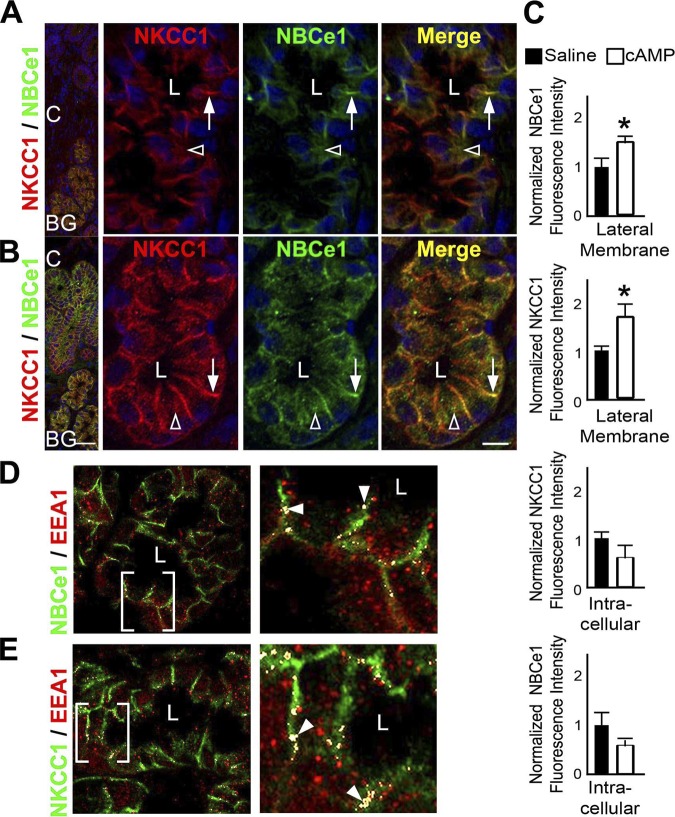Fig. 6.
cAMP-regulated basolateral trafficking of sodium-potassium-coupled chloride cotransporter 1 (NKCC1) and sodium-bicarbonate cotransporter (NBCe1) and localization in endosomes in rat Brunner's glands. Cryostat sections of rat proximal duodenum treated with normal saline and 1 mM dibutyryl cAMP were immunolabeled with antibodies against NKCC1, NBCe1, and the endosome marker EEA1. Immunolabeled sections were viewed by confocal microscopy as described in materials and methods. A and B: low- and high-magnification images of immunolabeled duodenum with Brunner's glands treated with saline (A) or dibutyryl cAMP (B). The distribution of NKCC1 (red) and NBCe1 (green) in the basolateral domains (white arrow) and in intracellular label (white open arrowhead) in saline- (A) or dibutyryl cAMP (B)-treated rat Brunner's gland. Merged images show areas of colocalization (yellow). Nuclei (blue) are labeled with Hoechst stain. C: quantification of normalized fluorescence intensity of NKCC1 and NBCe1 at the basolateral membrane and in basolateral intracellular compartments from saline- and dibutyryl cAMP-treated Brunner's glands. For each treatment group, fluorescence intensity was measured from a minimum of 4 glands from 3 different animals. Data represent +SE (n > 10). *P < 0.05. D: Distribution of NBCe1 (green) and EEA1 (red) in rat Brunner's gland. Bracketed area at left is magnified at right. Colocalization, white arrowheads. E: distribution of NKCC1 (green) and EEA1 (red) in rat Brunner's gland. Bracketed area at left is magnified at right. Colocalization, white arrowheads. Scale bar = 10 or 100 μm.

